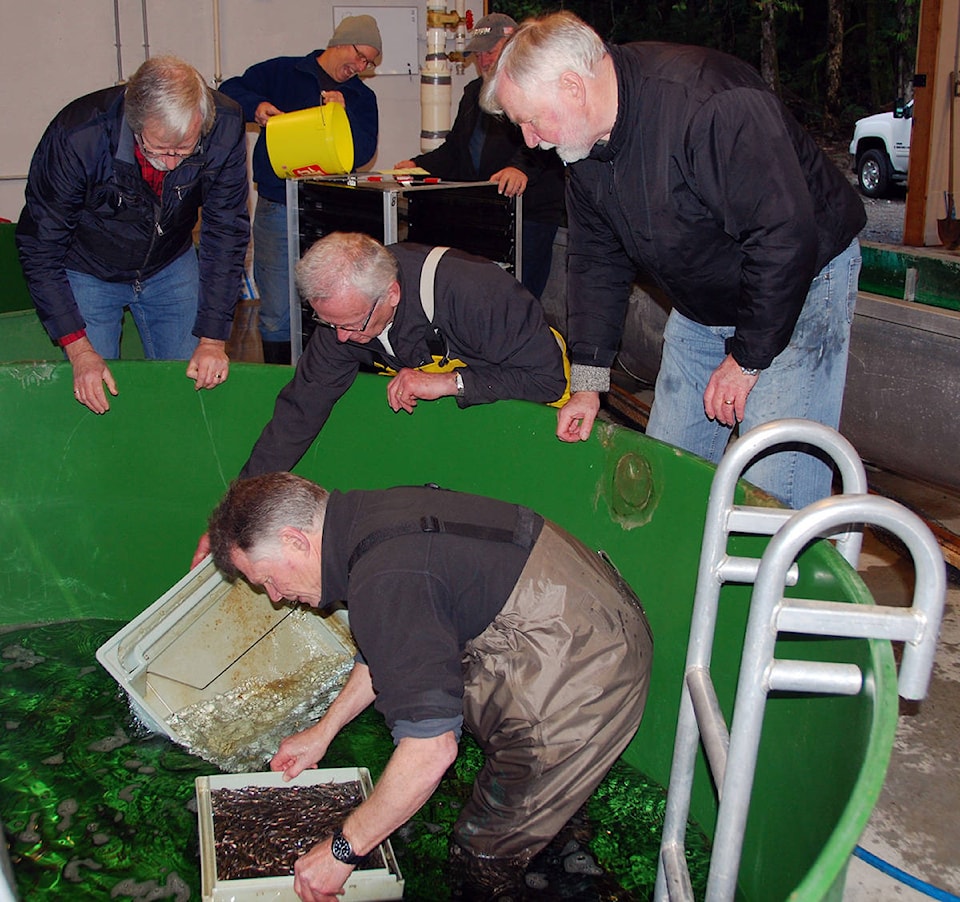Sally Manning | Contributed
Nearly 30 volunteers came to the Sooke Salmon Enhancement Society’s Sooke River Jack Brooks Hatchery recently for one thing: to pond chinook salmon fry into troughs and tanks at the hatchery.
Half of the chinook eggs were supplied as fertilized eggs from the Department of Fisheries and Oceans Nitinat hatchery, while the remainder came from broodstock taken by Sooke Salmon Enhancement Society volunteers in October from the Sooke River.
Once the eggs were fertilized they were put into incubator trays for several months until they hatched and became known as alevins.
Alevins have a yolk sac where they receive nourishment and grow. Once the sac is used up, they become fry and are then ready for ponding. This is what happened Jan. 11. Some 75 incubator trays holding up to 9,000 eggs each for a total of 500,000 fry were emptied into tanks and 17 troughs.
The society’s Sooke River Jack Brooks Hatchery started operation in last September. It replaced the Jack Brooks Hatchery on Rocky Creek which had been in operation since 1981.
Declining water flows at the Rocky Creek location meant salmon fry were released earlier than desired making them smaller than ideal. Water at the hatchery’s Sooke River location will remain plentiful, and that means that the fry can be kept longer.
Thanks to the help of volunteers who work tirelessly raising fry from fall to spring, the Sooke River now sees returns on average of 500 Chinook that come back to spawn and continue to grow the number of chinook in the Sooke watershed.
•••
Sally Manning writes for the Sooke Salmon Enhancement Society.
